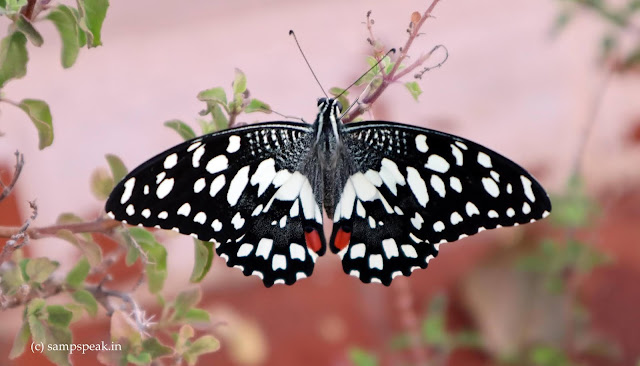சில நாட்கள் முன் பிரபல தமிழ் நாளிதழில் இந்த செய்தி என்னை ஈர்த்தது
! -
பருவமழை தள்ளிப்போனதால் பட்டாம் பூச்சிகள் வலசை செல்வது தாமதமாகியுள்ளது, இதனால்
இயற்கை சமன்பாடு மாறுவதாக பட்டாம்பூச்சி ஆர்வலர்கள் கவலை தெரிவித்துள்ளனர். உங்களில் சிலருக்கு தெரிந்து இருக்கலாம் - 'வலசை செல்வது' எனக்கு புதிதான சொல். எனவே தொடர்ந்து படித்தேன்.
Mostly you have read, seen videos and photos of Masai Mara. Promoted as one of
nature’s greatest spectacles, the annual migration draws millions of
tourists to the African country annually. The annual migration consists
of wildebeest, zebra, eland and gazelle. More than one million
wildebeest, 500,000 gazelle, and 200,000 zebras migrate in a clockwise hunt for
greener pastures across the plains of Africa. During this time,
huge herbivore herds, which have been grazing in Masai Mara Reserve of
Kenya, make the trip south to Serengeti Park of Tanzania. Many of them may not
make it as they have to transverse crocodile-infested rivers and lion-filled
lands. A couple of times, Kenya’s
wildebeest was broadcast live too,
providing unique opportunity for people to experience what the great migration
has to offer as well as an insight into what it is like to go on safari in
Kenya.
வலசை போதல் = Animal migration - என்பது பல இனங்களைச் சேர்ந்த பறவைகள், விலங்குகள் ஆகியவை பருவகாலங்களை ஒட்டி புலம் பெயருவதைக் குறிக்கும். எல்லா விலங்குகளும் பறவைகளும் வெப்பநிலை வேறுபாட்டை உள்ளூர உணர்கின்றன. மேலும் மனிதனைப் போலவே, விலங்கினங்கள் கோடைக்காலத்தைக் குளிர்ந்த இடங்களிலும், குளிர்காலத்தை வெதுவெதுப்பான இடங்களிலும் கழிக்க விரைகின்றன. அவை தங்கள் வாழிடத்தைப் பல்வேறு பருவகாலங்களில் மாற்றிக் கொள்கின்றன. குறிப்பிட்ட காலங்களில் விலங்குகள் அல்லது பறவைகள் தங்களின் வாழிடத்திற்கு ஒவ்வொரு ஆண்டும் ஒரு குறிப்பிட்ட காரணங்களுக்காக இடப்பெயர்வு செய்வது வலசை போதல் எனப்படும். அவை குழுக்களாகச் செல்லும் போது அவற்றைக் கொன்று தின்னும் உயிரிகளிடமிருந்து பாதுகாக்கப்படுகின்றன. வலசை போகும் பறவைகள், பூமியின் காந்தவிசையில் ஏற்படும் மாற்றங்களை உணர்கின்றன. அதன் உதவியுடன் அவை தங்களது சேருமிடத்தைக் கண்டறிகின்றன. பந்தயப் புறாக்கள் இந்த முறையில் தான் தனது இருப்பிடத்தை அறிகின்றன.
பறவை
இடம்பெயர்வு என்பது வழக்கமான பருவகால இயக்கமாகும், பெரும்பாலும் வடக்கு மற்றும் தெற்கு
திசைப் பறக்கும் பாதையில், இனப்பெருக்கம் மற்றும் குளிர்கால மைதானங்களுக்கு இடையில்
நடைபெறுகிறது. நாரைகள், ஆமை புறாக்கள், விழுங்குதல்
போன்ற உயிரினங்களின் இடம்பெயர்வை, 3,000
ஆண்டுகளுக்கு முன்பு ஹோமரும், அரிஸ்டாட்டிலும், பண்டைய கிரேக்க எழுத்தாளர்கள், போன்ற
சிலரால் பதிவுசெய்யப்பட்டுள்ளது. மிக சமீபத்தில், ஜொஹன்னஸ் லெச் 1749 இல் பின்லாந்தில்
வசந்த காலப்பறவைகளின் வருகையின் தேதிகளைப் பதிவு செய்யத் தொடங்கினர். ஆர்க்டிக் டெர்ன் பறவைகளே, மிக நீண்ட தூர இடம்பெயர்வினைச்
செய்யும், சாதனையை வைத்திருக்கிறது. ஒவ்வொரு ஆண்டும் ஆர்க்டிக் இனப்பெருக்கம் செய்யும்
இடங்களுக்கும் அண்டார்டிக்கிற்கும் இடைப்பட்ட நீண்ட தூரங்களைக் கடக்கும் பறவை இனமாக
உள்ளது. இந்த இனங்களே இதுவரை புதிவு செய்யப்பட்ட நீண்ட தூர வலசை செய்யும் பறவைகள் ஆகும்.
மண்ணில் பறந்து திரியும் வானவில் தான் பட்டாம் பூச்சி. வானில் தோன்றும் வானவில்லில் ஏழு நிறங்கள் மட்டுமே இருக்கும். ஆனால் பட்டாம் பூச்சிகள் பல வண்ணங்களில் பரவசப்படுத்தும். அதற்கேற்றார் போல் அதற்கு வண்ணத்துப்பூச்சி என்று மற்றொரு பெயரும் உண்டு. மலைக்காடுகளிலும் அடர்ந்த வனங்களிலும் அரியவகை தாவரங்கள் மற்றும் மலர்கள் பரவி இருப்பதற்கு பட்டாம் பூச்சிகளே காரணம். சின்னஞ்சிறிய பட்டாம்பூச்சிகள் பெரும் உயிரினமான யானையைப் போல் வலசை செல்லும் வழக்கம் கொண்டவை.
தென்மேற்கு
பருவமழை தொடக்க காலத்தில் மேற்கு தொடர்ச்சி மலைக்காடுகளில் இருந்து லட்சக்கணக்கில்
புறப்படும் வண்ணத்துப்பூச்சிகள் வானை அலங்கரித்தபடி கிழக்கு தொடர்ச்சி மலைக்காடுகளை
சென்றடையும். அங்கு இனப்பெருக்கம் செய்யும் பட்டாம் பூச்சிகள் வடகிழக்கு பருவமழை காலத்தில்
மீண்டும் மேற்கு தொடர்ச்சி மலைக்காடுகளுக்கு திரும்பும். வண்ணத்துப் பூச்சிகளின் இந்த
இடப்பெயர்ச்சி காலம்காலமாக நடக்கும் ஓர் இயற்கை நிகழ்வு.
The annual migration of
North America’s monarch butterfly is a unique and amazing phenomenon. The
monarch is the only butterfly known to make a two-way migration as birds do.
Unlike other butterflies that can overwinter as larvae, pupae, or even as
adults in some species, monarchs cannot survive the cold winters of northern
climates. Using environmental cues, the monarchs know when it is time to travel
south for the winter. Monarchs use a combination of air currents and thermals
to travel long distances. Some fly as far as 3,000 miles to reach their winter
home! Monarchs cluster together to stay
warm. Tens of thousands of monarchs can cluster on a single tree.
Back home, it is reported
that a surge of a million butterflies happens annually in the Western Ghats, as
they migrate just before the onset of the Southwest Monsoon. In 2020 as the World reeled under pandemic –
an unusual phenomenon took place in late August. A
record 1060 butterflies were found to be migrating from one hill complex to
another, in a single hour, on August 25. The movement itself was not
unusual—but the timing was. Every year, two seasonal butterfly migrations occur
between the Western and Eastern Ghats of the Indian peninsula in search of food
and survival.
Intense rain in the
Western Ghats complex during the southwest monsoon makes it difficult for the
butterflies to survive. To avoid the inclement weather, butterflies start their
first migration in May and June (before the onset of southwest monsoon) from
the Western Ghats to the plains and to the Eastern Ghats. Year 2020 was different. “This year, after a gap of eight
years, early migration took place. The migratory butterflies started to travel
back to the Western Ghats between the last week of August and September
middle,” said a newspaper article.
Butterflies are bioindicators,
and the early migration means an early arrival of monsoon. With climate change
altering weather phenomena across the world, tracking and studying seasonal
butterfly migrations have assumed greater significance. The butterflies originate from Western Ghats
ranges, such as Kodagu, Wayanad, Nilgiris, Siruvani and Anamalai, and move
toward the Eastern Ghats consisting Yercaud, Pachamalai, Kolli, and Kalvarayan
hills during the first migration. And back, for the second migration. Several research studies in Europe and North
America have suggested a correlation between climate change and changes in
population distribution of butterfly species. Butterfly behaviour is an
indicator of the health of the ecosystem—some researchers have studied climate adaptations
in butterflies to better understand the impact of climate change on ecosystems.
Interesting ! ..
collated a few sources to stitch an article for posting couple of photos of
butterfly taken by me.
22nd July 2021.


Very nice.
ReplyDeleteGood information
ReplyDelete